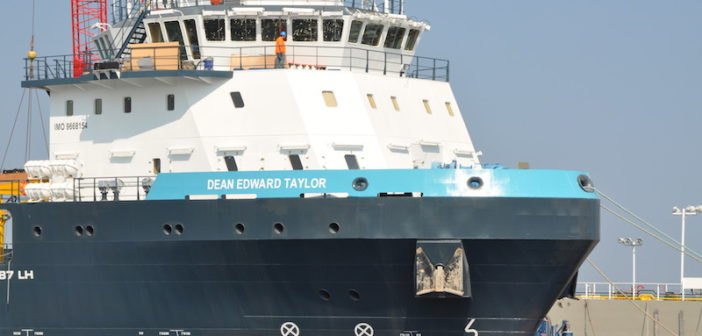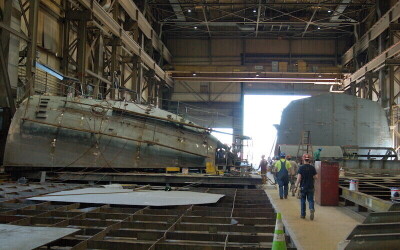The underlying day rate markets are improving, but the equities have not reacted. That was the take from offshore drilling and offshore service vessel chiefs at today’s opening session at the 32nd annual Marine Money Week in New York.
On the OSV panel, Tidewater President and CEO John Rynd and Seacor Marine Holdings President and CEO John Gellert talked about the “show me” mentality in the markets where investors need to see a real sustainable upturn in hires (for drilling rigs which leads to demand for OSVs) before making further upside bets. Gellert took it a step further, adding: “It’s better to be late than wrong,” possibly giving up some upside in asset values, but this also applies to stock prices.

Left to right, Tidewater President and CEO John Rynd and Seacor Marine Holdings President and CEO John Gellert at Marine Money Week in New York Monday. Photo by Barry Parker
In talking about OSV markets, both executives pointed to the North Sea as the most attractive market for their vessels. This was echoed by DNB Markets senior analyst Martin Huseby Karlsen who pointed to the strength in day rates for seventh generation drillships, and a nascent recovery in jackup hires.
The U.S. Gulf of Mexico and Mexican markets were not viewed favorably by either OSV CEO, with Rynd lamenting that the count of deepwater floaters in the U.S. Gulf is staying stubbornly at 19 to 20 units. He said that demand needs to increase. On the supply side, he noted that some units had departed for exploration in Guyana, also mentioned earlier by Adam Peakes, CFO and senior vice president at drilling stalwart Noble Corp., and that Mexico’s embracing of independent oil companies may also see an uptick.
Gellert pointed to the growth onshore in shale oil production as a potential dampener of U.S. Gulf drilling, also mentioned by DNB’s Karlsen who noted that oil majors are allocating less capital to offshore activities.
Both Rynd and Gellert, stressed that their greatest competitive advantage during these uncertain market conditions is their strong financial balance sheets, with each company having about four years of “runway” to wait out the time until the eventual upturn.
There are positive signs. Rynd said “day rates are inching up” in regions throughout the world, and Gellert said that oil companies “have been looking for longer terms” for OSVs.
As far as of reactivating cold-stacked equipment to meet any increase in demand, Gellert said that “at some point, there is no point to reactivating them.” With certain old vessels, “you need to consider scrapping them,” he said.
Rynd put the cost of recent reactivations of stacked vessels at $1.4 million each, but noted that older vessels stacked for lengthy periods would require $3 million to bring them out of cold stack, saying that such costs would not justify the costs of activations.





